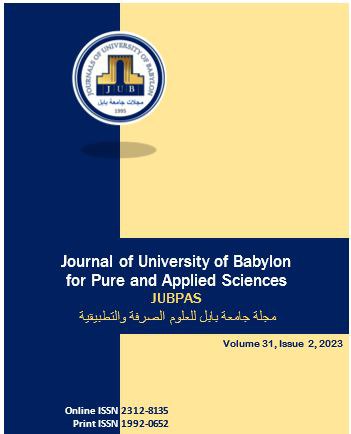Video Compression using Neural Weight Step and Huffman Coding Techniques
Main Article Content
Abstract
Background:
This paper proposes a Hierarchical Video Compression Scheme (HVCS) method with three hierarchical layers of quality with Recurrent Quality Enhancement (RQEN) network. Image compression techniques are used to compress frames in the first layer, where frames have the highest quality. Using high-quality frame as a reference, the Bi-Directional Deep Compression (BDC) network is proposed for frame compression in the second layer with considerable quality. In the third layer, low quality is used for frame compression using adopted Single Motion Compression (SMC) network, which proposes the single motion map for motion estimation within multiple frames. As a result, SMC provide motion information using fewer bits. In decoding stage, a weighted Recurrent Quality Enhancement (RQEN) network is developed to take both bit stream and the compressed frames as inputs. In RQEN cell, the update signal and memory are weighted using quality features to positively influence information of multi-frame for enhancement. In this paper, HVCS adopts hierarchical quality to benefit the efficiency of frame coding, whereas high-quality information improves frame compression and enhances the low-quality frames at encoding and decoding stages, respectively. Experimental results validate that proposed HVCS approach overcomes the state-of-the-art of compression methods.
Materials and Methods:
Tables 1& 2 illustrate representing yielded values for rate-distortion on both video datasets. As aforementioned, PSNR and MS-SSIM are used for quality evaluation, where bit-rates are calculated using bits per pixel (bpp). Table 1 illustrates PSNR performance, where they show better PSNR performance for the proposed compression model than other methods such as Chao et al [7] or optimized methods [1]. In addition, they outperform applying H.265 on standard JCT-VC dataset. On the other side, proposed compression scheme yielded better bit-rate performance than applying H.265 on UVG. As in Table 2, the MS-SSIM evaluation provided better performance of proposed scheme than all other learned approaches, where it reached better performance than H.264 and H.265. Due to bit-rate performance on UVG, Lee et al. [11] has comparable performance, and Guo et al [10] yielded lower performance than H.265. Applying on JCT-VC, DVC [10] is only comparable with H.265. On the opposite, the preformance of HVCS-rate-distortion have obvious better performance than H.265.
Furthermore, BjꝊntegaard Delta Bit-Rate (BDBR) [47] is also computed depending on H.265. A BDBR measure computes the average difference of bit-rate considering H.265 anchor, where better performance is indicated on lower values of BDBR [48]. In Table 3, BDBR performance is illustrated depending on PSNR and MS-SSIM, in which, bit-rate reduction considering the anchor is indicated by showed negative numbers. Such results outperform H.265 performance, where bold numbers represent best yielded results by learned methods. Table 3 provided a fair comparison on (MS-SSIM & PSNR) optimized techniques DVC [10] considering the anchor H.265.
Results:
Tables 1& 2 illustrate representing yielded values for rate-distortion on both video datasets. As aforementioned, PSNR and MS-SSIM are used for quality evaluation, where bit-rates are calculated using bits per pixel (bpp). Table 1 illustrates PSNR performance, where they show better PSNR performance for the proposed compression model than other methods such as Chao et al [7] or optimized methods [1]. In addition, they outperform applying H.265 on standard JCT-VC dataset. On the other side, proposed compression scheme yielded better bit-rate performance than applying H.265 on UVG. As in Table 2, the MS-SSIM evaluation provided better performance of proposed scheme than all other learned approaches, where it reached better performance than H.264 and H.265. Due to bit-rate performance on UVG, Lee et al. [11] has comparable performance, and Guo et al [10] yielded lower performance than H.265. Applying on JCT-VC, DVC [10] is only comparable with H.265. On the opposite, the preformance of HVCS-rate-distortion have obvious better performance than H.265.
Furthermore, BjꝊntegaard Delta Bit-Rate (BDBR) [47] is also computed depending on H.265. A BDBR measure computes the average difference of bit-rate considering H.265 anchor, where better performance is indicated on lower values of BDBR [48]. In Table 3, BDBR performance is illustrated depending on PSNR and MS-SSIM, in which, bit-rate reduction considering the anchor is indicated by showed negative numbers. Such results outperform H.265 performance, where bold numbers represent best yielded results by learned methods. Table 3 provided a fair comparison on (MS-SSIM & PSNR) optimized techniques DVC [10] considering the anchor H.265.
Conclusion:
This work proposes a learned video compression scheme utilizing the hierarchical frame quality with recurrent enhancement. Specifically, this work proposes dividing frames into hierarchical levels 1, 2 and 3 in decreasing quality. For the first layer, image compression methods are proposed, while proposing BDC and SMC for layers 2 and 3 respectively. RQEN network is developed with frame quality compressed frames and bit-rate information as inputs for multi-frame enhancement. Experimental results validated the efficiency of proposed HVCS compression scheme.
Similarly with other compression techniques, frame structure is manually set the in this scheme. A promising recommendation for future work can be accomplished by developing DNN networks which are automatically learned for the prediction and hierarchy.
Article Details
Section

This work is licensed under a Creative Commons Attribution 4.0 International License.
